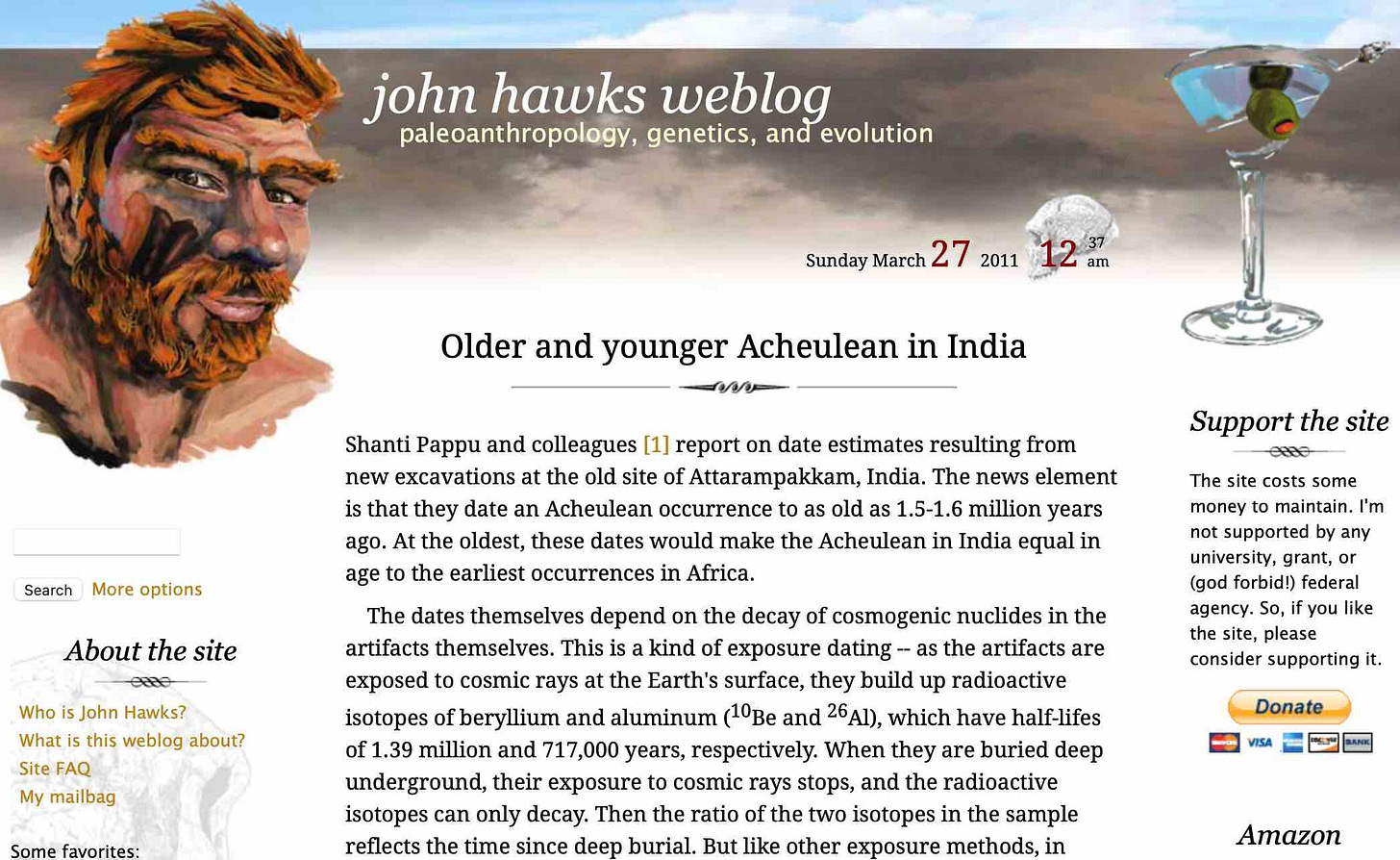A transition to a new platform for my words and video
The look and feel of the site is changing, with a new emphasis on subscriptions and connections.

Note: This post was written in 2022 with the site’s transition to the Ghost platform. In 2025 I moved to Substack where the site is currently. Many of the innovations described in this post remain in place, and the site history is an accurate account.
Over the past few months I have been building out this new platform to share the articles and video that I create. If you have been a reader for a long time, I hope that you enjoy the new look and format. If this is your first time reading, welcome!
Here's a quick summary of how things are changing:
Readers can now subscribe for e-mail updates. This is a free subscription for anyone who would like to get these in their inbox.
I will be moving to a schedule with new posts generally every two weeks. For a while I'll be experimenting with the release day.
I have set most of the archive aside for review, I will be carrying forward posts as I verify their content and links. I'll bring many of them up to date.
More video on the way.
I began writing online in 1998, and I established this blog in 2004. There have been many changes over the years. I began serving up these pages on a second-hand Pentium server in my lab using an open source Perl script. Here and there in the archives I'm still finding “::” hanging around. I went to a dynamic CMS on the cloud and when readership became too large for my cloud server I went to a static site.
This is my fourth major platform shift in 18 years. If you've been following for a while you know that I am always experimenting with the boundaries of a platform. Evaluating these experiments shows me how readers are finding my work, and helps me see possible paths forward in broadening my scientific work. As I investigated this new platform, I experimented in the background for months—comparing several alternatives—to settle on the system that would work best for both me and readers for the future. I have always used open source software and am pleased to be continuing that tradition with Ghost.
Changes affect readers, and they affect the way I write. Every so often I look back at previous iterations of my blog, and I see so many things that I really loved in 2006 but that would no longer work today. I really miss sidebar links. But I value even more that without a sidebar, I am providing a more accessible site for people using phones or screen readers. Art on the site has given way to more photography. A surprising number of readers once were convinced that I must look like a red-headed caveman, so it's good to be able to post a lot more photos.
The core of my writing has always been taking new scientific articles and analyzing them in detail for their broader meaning or application to a problem. I learned this as an English major, a method known as explication de texte. These posts are challenging work, and they provide notes for my own research. Together with these, I have always interspersed longer essays and shorter link posts. In the early years, my shorter posts were very Slashdot-like with a link, quote, and paragraph of commentary. I have often done photos or art posts. A theme from the very beginning has been to provide useful context for my courses in evolution and genetics.
Starting a correspondence
I've been thinking a lot about what this site means to me, what value it provides for people, and what it can be in the future. I decided on some priorities to guide my writing:
Focus on deeper insights into the science of human origins that have enduring value.
Provide more ways for people to connect with the science, including video and the option of e-mail updates.
Enhance sustainability by building groundwork for subscriptions, connections to books, and news on events.
This is beginning with the free e-mail subscription option, which I hope will build a stronger relationship with readers. I really enjoy hearing from other people, especially when they let me know what topics and questions prompt them to think in a new or different way.
Curating the archive
My archives have more than 4700 posts. With an average post length around 500 words, these add up to around 2.5 million words over the last 18 years. That's the equivalent of 2 books full of text every year.
Through each previous platform transition, I maintained the archive and all URLs. Even so, there have been plenty of dropped inbound links, and over the years a large fraction of outbound links have become dead. This is much more of an issue for links to news sites and other blogs than for links into the scientific literature.
It's a lot like an attic full of old junk, this archive.
There are gems: in-depth researched posts that continue to draw readers years after I wrote them. My top posts in terms of page views this month include posts from every year of my writing, from 2005 right up through 2021. Hundreds of people every day find information that I shared ten or fifteen years ago. Most of these folks are looking for answers to questions they have today, and my work from 10 years ago may be the best that is available.
Then there is the clutter: 80% of posts in my archive were read by fewer than 20 people last year, and half were read by fewer than 5 people. Many of these are the short Slashdot-style link-quote-comment posts, and their value has eroded away except as a record of what I was reading at a certain time. Many posts have outdated references or coding that no longer works in the same way.
With this transition, I have decided to overhaul the archive of past posts. I have prioritized long posts, checking each either to update or to mark it as a historic piece that may be out of date. This also gives me an opportunity to revisit topics that new readers find from outside searches, enabling me to provide better, more current information. This process will continue for some time.
Looking forward
The switch to online classes in 2020 meant that I have been making a lot of video. This isn't new for me, I've been making video for a long time. My video series produced by The Great Courses have been a great way for people to learn some of the history of human evolutionary science. My massive open online course, “Human Evolution: Past and Future”, was a fun production that included interviews and visits to archaeological sites through the medium of video. Many of the videos from that course are available on my YouTube channel.
Lectures for my recent courses are not as ready for public consumption as I would like. They're too long and in many cases too specialized. So I've been planning a new series of videos that are made specifically for sharing. I have some research travel underway and will be working to roll out this new series later in 2022.





